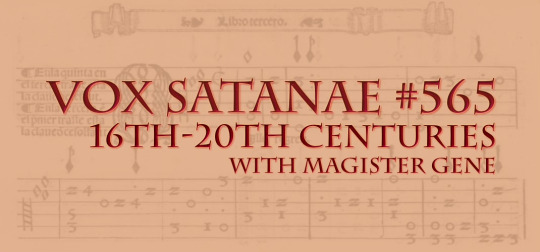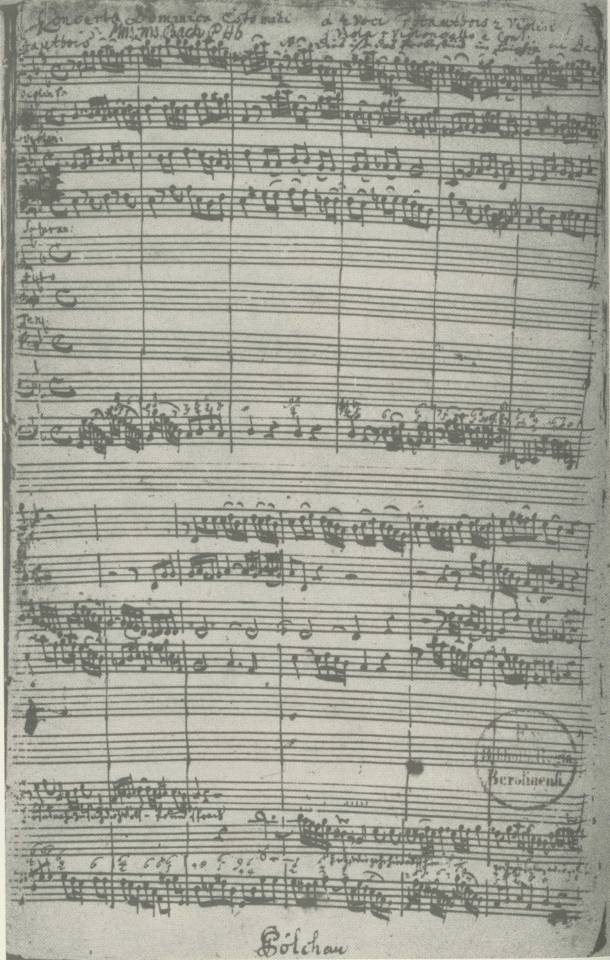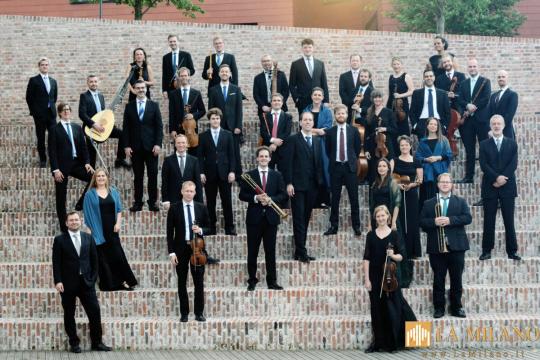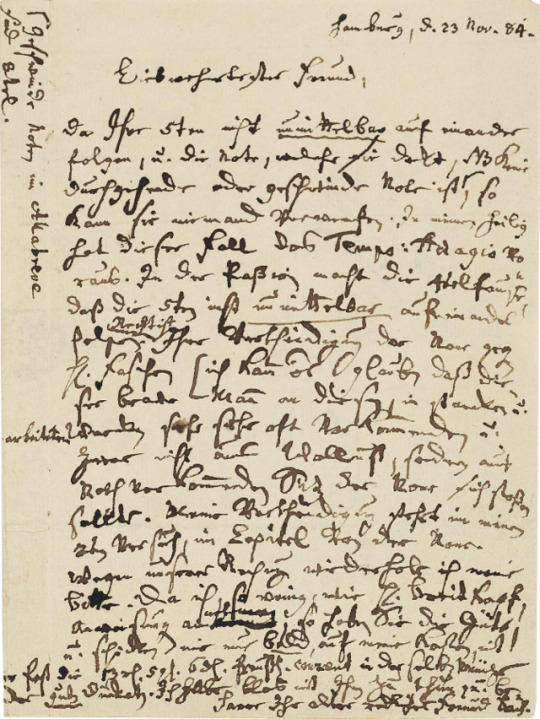#johann kuhnau
Text
Vox Satanae - Episode #565: 16th-20th Centuries - Week of 2023 April 03
Vox Satanae – Episode #565
16th-20th Centuries
We hear works by Francisco de Peñalosa, Luis de Narváez, Giovanni Gabrieli, Franz Tunder, Johann Kuhnau, Pieter Hellendaal, Karol Lipiński, Eugen d’Albert, and Yves Prin.
139 Minutes – Week of 2023 April 03
Stream Vox Satanae Episode 565.
Download Vox Satanae Episode 565.

View On WordPress
#classical instrumental music#classical music#classical vocal music#Eugen d&039;Albert#francisco de peñalosa#Franz Tunder#giovanni gabrieli#johann kuhnau#Karol Lipiński#Luis de Narváez#magister gene#Pieter Hellendaal#radio free satan#vox satanae#Yves Prin
4 notes
·
View notes
Text
Mi crítica del concierto de clausura del Otoño Barroco 2023.
#orquesta residente del otoño barroco#coro de la aaobs#ariel hernández#víctor cruz#mateo murillo#marco antonio garcía de paz#georg friedrich haendel#antonio vivaldi#johann kuhnau#johann sebastian bach#música#music
1 note
·
View note
Text
Vigilate mecum
Johann Kuhnau (6 aprile 1660 - 1722): Tristis est anima mea, mottetto a 5 voci (c1705). Camerata Lipsiensis, dir. Gregor Meyer.
Tristis est anima mea usque ad mortem:
sustinete hic et vigilate mecum.
Iam videbitis turbam quæ circumdabit me.
Vos fugam capietis, et ego vadam immolari pro vobis.
Johann Sebastian Bach (1685 - 1750): Der Gerechte kömmt um, mottetto per coro e orchestra BWV C.08,…

View On WordPress
#Camerata Lipsiensis#English Baroque Soloists#Gregor Meyer#Johann Kuhnau#Johann Sebastian Bach#John Eliot Gardiner#Monteverdi Choir
0 notes
Text

Jesus nahm zu sich die Zwölfe, BWV 22
Jesus nahm zu sich die Zwölfe (Jesus gathered the twelve to Himself), BWV 22, is a church cantata by Johann Sebastian Bach composed for Quinquagesima, the last Sunday before Lent. Bach composed it as an audition piece for the position of Thomaskantor in Leipzig and first performed it there on 7 February 1723.
The work, which is in five movements, begins with a scene from the Gospel reading in which Jesus predicts his suffering in Jerusalem. The unknown poet of the cantata text took the scene as a starting point for a sequence of aria, recitative, and aria, in which the contemporary Christian takes the place of the disciples, who do not understand what Jesus is telling them about the events soon to unfold, but follow him nevertheless. The closing chorale is a stanza from Elisabeth Cruciger's hymn "Herr Christ, der einig Gotts Sohn". The music is scored for three vocal soloists, a four-part choir, oboe, strings and continuo. The work shows that Bach had mastered the composition of a dramatic scene, an expressive aria with obbligato oboe, a recitative with strings, an exuberant dance, and a chorale in the style of his predecessor in the position as Thomaskantor, Johann Kuhnau. Bach directed the first performance of the cantata during a church service, together with another audition piece, Du wahrer Gott und Davids Sohn, BWV 23. He performed the cantata again on the last Sunday before Lent a year later, after he had taken up office.
The cantata shows elements which became standards for Bach's Leipzig cantatas and even the Passions, including a "frame of biblical text and chorale around the operatic forms of aria and recitative", "the fugal setting of biblical words" and "the biblical narrative ... as a dramatic scena".
read more..
#education#today i learned#learning#educate yourselves#wikipedia#wiki today#today news#today#featured#article#school#music#cantata#bach#johann sebastian bach#jesus
4 notes
·
View notes
Text
MARTIN STADTFELD

BAROQUE COLOURS
El nuevo álbum doble de Martin Stadtfeld Baroque Colours presenta un colorido panorama sonoro del Barroco, con obras originales de Bach a Rameau, así como sus propios arreglos de conocidos éxitos barrocos y joyas musicales desconocidas. A la venta el 3 de noviembre.
Consíguelo AQUÍ
El nuevo álbum doble de Martin Stadtfeld Baroque Colours presenta un colorido panorama sonoro del Barroco, con obras originales de Bach a Rameau, así como sus propios arreglos de conocidos éxitos barrocos y joyas musicales desconocidas.
En Baroque Colours, Stadtfeld interpreta una selección personal de breves obras originales de Johann Sebastian Bach, Georg Friedrich Händel, Domenico Scarlatti, así como de los grandes compositores barrocos franceses François Couperin y Jean-Philippe Rameau, utilizando un piano de cola moderno. Pero Stadtfeld también ha seleccionado obras de compositores barrocos poco conocidos para la primera parte del álbum, como Joachim Kuhnau, Baldassare Galuppi, Antonio Soler o Joseph-Nicolas-Pancrace Royer.
Para la segunda parte de Baroque Colours, Stadtfeld ha preparado una selección muy personal de obras barrocas para piano. Entre ellas se encuentran versiones para piano de piezas famosas como el “Verano” y el “Invierno” de las “Cuatro estaciones” de Vivaldi o el “Canon” de Pachelbel, del que Stadtfeld hizo una versión para piano a cuatro manos y la grabó con la pianista Lilian Akopova. También es su compañera en las versiones a cuatro manos de un preludio del “Clave bien temperado” de Bach y de la Passacaglia de la ópera “Armida” de Lully.
Además, en Baroque Colours, Stadtfeld improvisa sobre temas musicales de Bach (incluido el famoso “Aire”) y de Haendel, pero también sobre obras menos conocidas: de Joachim Kuhnau o Melchior Vulpius (4 improvisaciones sobre “Ach bleib mit Deiner Gnade”), así como sobre la sonata para violín “La Folia” de Corelli.
Con el programa Baroque Colours, Martin Stadtfeld rinde homenaje a una época que abarca desde principios del siglo XVII hasta mediados del XVIII y su riqueza musical. Se puede experimentar la inquietud “intelectual” por la música, como las fugas de Bach, así como el brillante virtuosismo con el que también se lucieron Couperin, Rameau o Scarlatti. Además, los arreglos de Stadtfeld abarcan desde la ópera barroca de Jean-Baptiste Lully hasta conciertos como el Concierto para trompeta de Georg Philipp Telemann y la música de ballet del inglés Henry Purcell, celebrados como “Orpheus Britannicus”.
El doble álbum, que Sony Classical publicará el 3 de noviembre, ha sido coproducido por Sony Classical y Westdeutscher Rundfunk.
SOBRE EL ARTISTA
Martin Stadtfeld fue el primer pianista alemán que ganó el Concurso Internacional Bach de Leipzig. Su primer álbum para Sony Classical, las Variaciones Goldberg de Bach, llegó directamente a lo más alto de las listas de clásicos alemanas. Desde entonces, muchos de los álbumes de Stadtfeld se convirtieron en éxitos de ventas en Alemania, especialmente sus álbumes de Bach (Bach Pur, Conciertos para piano Vol 1 y 2, Das Wohltemperierte Klavier). Con sus álbumes Handel Variations y Piano Songbook empezó a crear nuevas versiones de piezas clásicas.
TRACKLIST BAROQUE COLOURS
CD 1 (original works)
1. Johann Kuhnau: Prelude from "Partie V" in G-Major
2. Johann Kuhnau: Gigue from "Partie V" in G-Major 0
3. Francois Couperin: Prélude No. 7 in B-Major
4. Francois Couperin: Les Barricades Mystérieuses
5. Johann Sebastian Bach: Andante from the Sonata BWV 964
6. Domenico Scarlatti: Sonata in f- minor, K. 466
7. Domenico Scarlatti: Sonata in A minor, K. 54
8. Georg Friedrich Händel: Sonata B-flat Major HWV 434 Prelude
9. Georg Friedrich Händel: Sonata B-flat Major HWV 434 Allegro
10. Georg Friedrich Händel: Sonata B-flat Major HWV 434 Aria con Variazioni
11. Jean-Philippe Rameau: Gigue en Rondeau (from Suite in E - minor)
12. Jean-Philippe Rameau: Tambourin (from Suite in E minor)
13. Baldassare Galuppi: Sonata No. 3 C minor: I Allegro moderato
14. Baldassare Galuppi: Sonata No. 3 C minor II. Allegro
15. Antonio Soler: Sonata No. 21 in C-sharp minor, R. 21
16. Joseph-Nicolas-Pancrace Royer: Tambourins, Suite des Matelots
17. Joseph-Nicolas-Pancrace Royer: Le Marche des Scythes
18. - 19. Johann Sebastian Bach: Prelude and Fugue E- flat major from Well-tempered Clavier, Book 2, BWV 876
CD 2 New arrangements for piano, all by Martin Stadtfeld
1. J. S. Bach: Prelude No.1 in C-Major from The Well-Tempered Clavier, Book I: (arr. for four hands - with Liliana Akopova, piano)
2. Jean-Baptiste Lully: Passacaglia from Armide, LWV 71 (version for four hands - with Lilian Akopova)
3. Johann Pachelbel: Canon (arranged for piano with four hands - with Liliana Akopova)
4. Henry Purcell: "Hush, no more, be silent" (from The Fairy Queen)
5. Henry Purcell: Chaconne-Dance for Chinese Man and Women (from The Fairy Queen)
6. Antonio Vivaldi: Four Seasons Summer (after Four Seasons, Summer RV 315, III, Presto)
7. Antonio Vivaldi: Four Seasons Winter (after Four Seasons Winter, RV 297, III, Allegro-Lento)
8. Georg Philipp Telemann: Allegro (from Trumpet Concerto in D Major TWV 51: D7)
9. Gaspar Sanz: Canarios
10. Georg Friedrich Händel: Praise (arr. for piano from "Dank sei Dir, Herr", Israel in Egypt, HWV 54, fake by Siegfried Ochs)
11. Johann Kuhnau: Piano Improvisation 1 (after Prelude from Partita)
12. Johann Kuhnau: Piano Improvisation 2 (after Prelude from Partita V)
13. Johann Sebastian Bach: Piano Mediation 1 (after Minuet in D minor from "Notebook for Anna Magdalena Bach")
14. Johann Sebastian Bach: Piano Meditation 2 (after Minuet in G minor, "Notebook for Anna Magdalena Bach")
15. Johann Sebastian Bach: Air Piano Meditation
16. Johann Sebastian Bach: Fugue Piano Mediation (after Fugue for Organ in G minor, BWV 578)
17. Georg Friedrich Händel: Chaconne Piano Mediation (after Chaconne in G Major, HWV 435)
18. Georg Friedrich Händel: Sarabande Piano Meditation (after Sarabande from Suite in D minor, HWV 437)
19. Georg Friedrich Händel: Aria Piano Meditation (after Aria "Eternal Source of Light Divine")
20. Arcangelo Corelli: Folia Piano Variation 1 (after A. Corelli: Violin Sonata in D minor "La Folia", Op. 5 No. 12)
21. Arcangelo Corelli: Folia Piano Variation 2
22. Arcangelo Corelli: Prelude Piano Variation (after Corelli, Prelude from Violin Sonata in F Major, Op. 5 No.10)
23. - 26. Melchior Vulpius: Meditation 1 – 4 on "Ach bleib mit Deiner Gnade"
0 notes
Text
New issue Classical No.261 Johann Kuhnau.

0 notes
Text
Varese, concerto natalizio “Due Magnificat per Natale” alla basilica di San Vittore

Varese, concerto natalizio “Due Magnificat per Natale” alla basilica di San Vittore.
Questo Natale la STAGIONE MUSICALE COMUNALE DI VARESE non poteva offrire un piatto più ricco: non uno, ma due Magnificat. Quello meno noto ma non meno bello di Johann Kuhnau e, quello più celebre, di Johann Sebastian Bach. Il concerto rientra nella ventitreesima stagione musicale “Una stagione, tante voci” ideata dal direttore artistico Fabio Sartorelli.
Appuntamento a giovedì 15 dicembre, nella basilica di San Vittore alle 20.30 con “Due Magnificat per Natale”; anche se più che a Varese, sembrerà di essere a Lipsia visto che entrambi i compositori hanno ricoperto il ruolo di Kantor alla Thomaskirche della città tedesca. Kuhnau dal 1701 alla morte (nel 1722), mentre Bach dal 1723 fino al 1750.
Il programma della serata prevede l’esecuzione del Magnificat in do maggiore di Kuhnau e del Magnificat in re maggiore BWV 243. Il Magnificat, insieme alla Messa in Si Minore, è il dittico dell’opera in latino di Bach: con il Magnificat il compositore realizzò inizialmente nel 1723 una versione per i Vespri di Natale a Lipsia; fu la prima composizione che scrisse nel ruolo di Kantor, dopo essere succeduto a Kuhnau. Il lavoro del Magnificat simboleggiò un vero e proprio passaggio di consegne tra i due artisti, nonché un omaggio al maestro Kuhnau. Successivamente il lavoro subì delle modifiche, a partire dall’eliminazione dei brani specifici sul Natale, fino alla trasposizione in re Maggiore. Bach lo eseguì per la prima volta nell’estate del 1733 nella chiesa di San Tommaso di Lipsia.
Meno conosciuto il lavoro di Kuhnau, predecessore di Bach la cui musica secolare è andata scomparsa, mentre ci è giunta la sua produzione di opere sacre. Il suo Magnificat è composto in latino e contiene dei brani musicali in tedesco, è un’opera complessa e prestigiosa.
Chi sono i musicisti che si cimenteranno per ben due volte con il Vangelo di Luca? Il coro Vox Luminis (https://www.voxluminis.com/en/), fondato nel 2004 dal basso Lionel Meunier, è specializzato in brani inglesi, italiani e tedeschi del Settecento e di inizio Ottocento ed è acclamato a livello internazionale per la sua unicità e qualità. Ha vinto un Gramophone Award per la migliore registrazione discografica del 2012. Da allora tiene oltre 70 concerti all’anno nelle sale più prestigiose del mondo, dall’Auditorio Nacional di Madrid alla Wigmore Hall di Londra, dalla Philarmonie di Berlino al Lincoln Center di New York.
La Freiburger Barockorchester (https://barockorchester.de) è nata a metà anni Ottanta e nel giro di pochi anni ha iniziato a fare concerti all’estero (Amsterdam, Texas, Thailandia, Filippine, Singapore, Malesia e Indonesia). Nel 2006 ha vinto il Reinhold Schneider Prize di Friburgo, il Deutscher Schallplattenpreis (il premio annuale della critica discografica tedesca) e il premio Fondazione Culturale Europea; nel 2007 all’orchestra è stato riconosciuto il German Music Prize, mentre nel 2012 le è stato assegnato il Gramophone Award nella categoria “orchestra barocca”. Perché venire al concerto? “È una musica di una bellezza incommensurabile – risponde Sartorelli – e oltretutto verrà eseguita da un coro e da un’orchestra che sono fra i migliori al mondo”.
Prevendita biglietti e abbonamenti:
Biglietto intero: 25 euro. Biglietto per gruppi di almeno 10 persone (scuole, associazioni culturali, corali varesine): 15 euro, con prenotazione obbligatoria entro e non oltre cinque giorni dal concerto richiesto. Promozione mini-abbonamento per le corali: pacchetto di tre concerti a 45 euro. I tre concerti selezionati sono “Due Magnificat di Natale” (giovedì 15 dicembre), “Tom e Will, due grandi a 400 anni dalla morte” (mercoledì 22 marzo) e “Omaggio ad Arvo Pärt” (martedì 4 aprile). Regala un abbonamento per Natale: pacchetto di 4 concerti a 60 euro da regalare per Natale. Nella promozione natalizia ci sono i concerti del 2023, “Il Rach 2 nel 150° anniversario della nascita di Rachmaninov” (mercoledì 25 gennaio), “Tom e Will, due grandi a 400 anni dalla morte” (mercoledì 22 marzo), “Omaggio ad Arvo Pärt” (martedì 4 aprile) e “I 130 anni della Sesta sinfonia di Čajkovskij” (mercoledì 19 aprile).
Per maggiori informazioni: https://stagionemusicale.it, [email protected]
...
#notizie #news #breakingnews #cronaca #politica #eventi #sport #moda
Read the full article
0 notes
Text

1974
#history#vintage#music#art#1970s#1974#baroque music#classical music#harpsichord#johann kuhnau#composer#christopher bowers broadbent#harpsichordist#pianist#classical musician#musician#performer#vinyl record#biblical sonatas
3 notes
·
View notes
Text
On April 6 in Music History
On April 6 in Music History
. 1660 ~ Johann Kuhnau, German composer and writer
. 1895 ~ Waltzing Matilda, one of Australia’s best-known tunes written by bush poet Banjo Paterson, was first publicly performed at a hotel in the remote northern town of Winton.
. 1913 ~ ‘Pappy’ Wade Ray, Country entertainer/musician with the Grand Ole Opry
. 1917 ~ George M.…
View On WordPress
#ABBA#composer#entertainer#fiddler#guitarist#holiday#Igor Stravinsky#jazz#Johann Kuhnau#musician#pianist#singer#songwriter#Tartan Day#Today in Music History#video
1 note
·
View note
Text
Orgelconcert Jos Vogel

Het derde orgelconcert in de serie Zomeravondconcerten in de Oostkerk wordt op woensdag 22 juli gegeven door de Middelburgse organist Jos Vogel. Op het historische De Rijckere-orgel speelt hij een programma met muziek van Carl Philipp en Johann Sebastian Bach, Johann Kuhnau en Felix Mendelssohn-Bartholdy.
Het concert begint om 20.00 uur. De toegangsprijs bedraagt €10, tot 18 jaar €5. Vooraf…
View On WordPress
1 note
·
View note
Video
youtube
In my ongoing exploration of Russian music, I decided to listen to Alexander Borodin (1833- 1887). It turns out that I have heard this theme from “Prince Igor”, but never knew the composer until now. What amazes me more is that Borodin was a Chemist and Physicist by trade, and composed in his free time. He joins a long list of composers who had other jobs, partially because music was and still remains an uncertain trade.
I have read of men like Bach’s predecessor in Leipzig, Johann Kuhnau, who was a lawyer and mathematician in addition to a composer. So it should not come as a surprise that Borodin had many skills. This should prove that nobody is either wholly scientific or wholly creative. Many of the greatest figures in classical musical history were both!
#alexanderborodin#princeigor#borodin#russianmusic#russiancomposers#russianphysicists#russianchemists#19thcenturyrussia
7 notes
·
View notes
Text
Georg Philipp Telemann
Georg Philipp Telemann, (born March 14, 1681, Magdeburg, Brandenburg [Germany]—died June 25, 1767, Hamburg), German composer of the late Baroque period, who wrote both sacred and secular music but was most admired for his church compositions, which ranged from small cantatas to large-scale works for soloists, chorus, and orchestra.
Life
Telemann was the son of a Protestant minister…
View On WordPress
#article#Baroque period#Bayreuth#britannica#Carl Philipp Emanuel#chorus#church compositions#collegium musicum#Eisenach#encyclopeadia#encyclopedia#France#Frankfurt am Main#Georg Philipp Telemann#Germany#Hamburg#Hamburg Opera#Johann Kuhnau#Johann Sebastian Bach#Leipzig#Magdeburg#Music#publishing
0 notes
Link
Mi crítica del concierto de Ottava Rima anoche en el Espacio Turina.
#ottava rima#israel moreno#jesús garcía aréjula#jorge enrique garcía#marta barragán#andré campra#johann kuhnau#música#music
0 notes
Photo

Bach, Carl Philipp Emanuel ( 1714-1788 ).
Autograph letter signed (’Bach’) to the composer Johann Christoph Kuhnau in Berlin, Hamburg, 23 November 1784.
Source: Christie’s.com
19 notes
·
View notes
Text
Picks of the Week - December 15, 2021
A Busy Festive #Picksoftheweek @chapelsistine @vanchristmas
@thecultch @bbyvillage
@ImaginePicasso @theartsclub
@mitchplusmurray @capbridge
@VanDusenGdn @stanleyparkrail
@GrouseMountain @chorleoni
@canadaplace @pne_Playland @VSOrchestra @dancecentre
It’s the final fun-up to Christmas, just 10 days to go, but still a lot of entertaining picks of the week
Bach: Tomorrow night, Early Music Vancouver – Festive Cantatas: Bach’s Christmas Oratorio feat. Pacific Baroque Orchestra features some of the most popular Christmas music of Germany in the 18th century by Johann Kuhnau and J.S. Bach at Chan Centre for Performing Arts at UBC, Chan Shun…

View On WordPress
0 notes
Audio
(vía https://open.spotify.com/track/42JzW9WjMWX8wXwrp1YF1A?si=dI_7_VafRHGG1VjhnwVTWQ)
0 notes